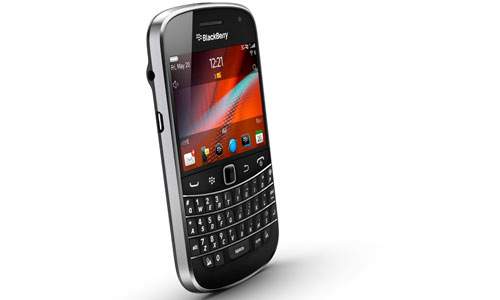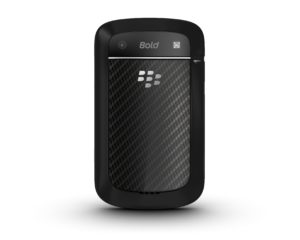BlackBerry manufacturer Research in Motion (RIM) makes both high- and low-end devices, and its Bold range has traditionally fallen somewhere in the middle of its range. The latest addition to the Bold family, the 9900, is a beautiful device that errs on the higher end of the scale and promises users faster browsing and easier interface navigation.
If we had to sum up the 9900 in a single sentence it would be: “It’s very much like the previous Bold, but with a touch screen.” Though that’s a little reductive, it sums up our first impression of handling the device.
The 9900 is a curious combination of the sort of comfortable Qwerty keyboards that make most BlackBerry’s devices instantly recognisable and capacitive touch screens that so many non-BlackBerry users have assumed the devices include when trying to use one for the first time.
The result is a BlackBerry that’s easier to operate than non-touch versions, albeit one that is still burdened with an operating system (OS) that is more complicated and frustrating to use than it should be, especially for first-time users.
Though the 9900’s menu structure is somewhat better than its predecessors’, changing settings still requires digging about in menus, and sections still aren’t labelled as intuitively as they should be. Long-time BlackBerry users won’t find this a problem, but for those who aren’t accustomed to the BlackBerry software, it’s an annoying aspect of an otherwise lovely device.
Equipped with a 1,2GHz processor, 768MB of RAM and 3G HSPA+ aerial, the 9900 runs BlackBerry 7 OS, which includes support for HTML5 and promises much faster browsing speeds. RIM claims there is an improvement in speed of as much as 40% over BlackBerry 6 and 100% over BlackBerry 5.
The 9900 has the same dimensions as the Bold 9000 but is far thinner at only 10,5mm thick and — this is a big selling point — it includes a larger keyboard. The keyboard is superb and the bigger keys result in fewer typing errors. If you’re a fan of Qwerty keyboards, the 9900’s is best in class.
With support for 16m colours and a resolution of 640×480, the phone’s 2,8-inch screen is bright, crisp and responsive to the touch. It supports pinch to zoom, which makes Internet browsing and document reading even better.
The 9900 also includes a digital compass and accelerometer as well as support for near-field communications (NFC), the mobile payments technology. Although there aren’t as yet any real uses for NFC in SA, it does mean that the 9900 has a degree of future-proofing.
One of the most appealing things about the 9900 is the styling. It feels and looks like a top-end device. From the feel of the keyboard and the vibrancy of the screen, to the stainless-steel trim and matching buttons around the edge of the device, it exudes style.
The high-gloss rear cover is a fingerprint magnet, but the rubberised portion that surrounds it makes the 9900 a pleasure to hold and less slippery than it would be had the cover’s material been used for the whole rear.
The 9900 comes with 8GB of internal storage and support for microSD cards up to 32GB. Like its peers, the 9900 is charged or tethered by means of microUSB.
It also includes a 5-megapixel rear camera with an LED flash. The camera is capable for its class, and although RIM hasn’t included a front-facing camera, considering how rarely we’ve actually ever used one, this doesn’t seem much of an impediment.
The BlackBerry Bold 9900, which retails for R6 999 without a contract, is the logical evolution of the Bold range and that’s both where it succeeds and where it fails. It succeeds because it offers a familiar but improved experience to the BlackBerry faithful. It fails because it offers little in the way of features compelling enough to attract outsiders to the fold.
If you like BlackBerry devices, you’ll probably love the new Bold. If you don’t, you probably won’t even notice it. — Craig Wilson, TechCentral




No comments:
Post a Comment